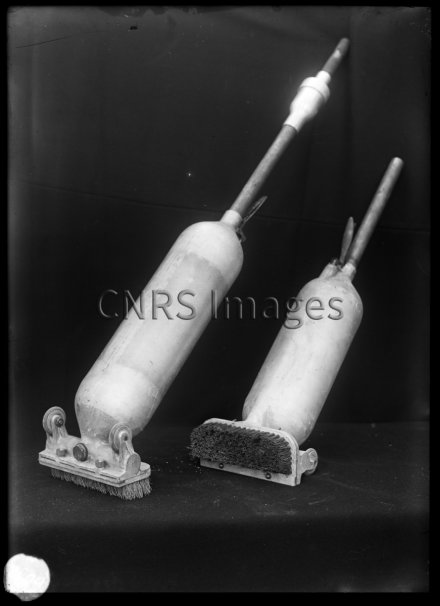Production year
1926

© Fonds historique / CNRS Images
19000001_0632
Sweeper for tile floor cleaning and floorboard, December 1926. The household revolution also concerned floor cleaning. One of the new sweeper's challenges was to find "a method for collecting dirty water besides a sponge or rag". The goal was also to avoid "the arduous act of prostration that soaked your knees, broke your back, soiled your hands and put your face right up in the dirt". The solution came from Paul Breton, the son of the ONRSII’s director. His device adapted to vacuum cleaners, which also helped to make this purchase profitable, as it was still very expensive during the inter-war period. Breton’s device was composed of a 3 to 4 liter bucket fitted with a hollow sleeve, that hooked up to a vacuum cleaner in action. The clea¬ning operation could be carried out in an upright position and even while "wearing white gloves", as pointed out by one enthusiastic reviewer. Office national des recherches scientifiques et industrielles et des inventions.
The use of media visible on the CNRS Images Platform can be granted on request. Any reproduction or representation is forbidden without prior authorization from CNRS Images (except for resources under Creative Commons license).
No modification of an image may be made without the prior consent of CNRS Images.
No use of an image for advertising purposes or distribution to a third party may be made without the prior agreement of CNRS Images.
For more information, please consult our general conditions
1926
Our work is guided by the way scientists question the world around them and we translate their research into images to help people to understand the world better and to awaken their curiosity and wonderment.